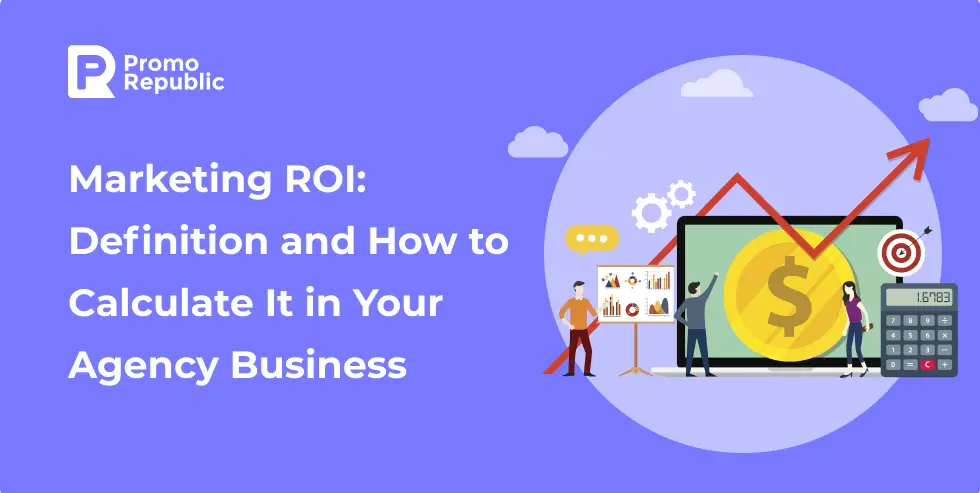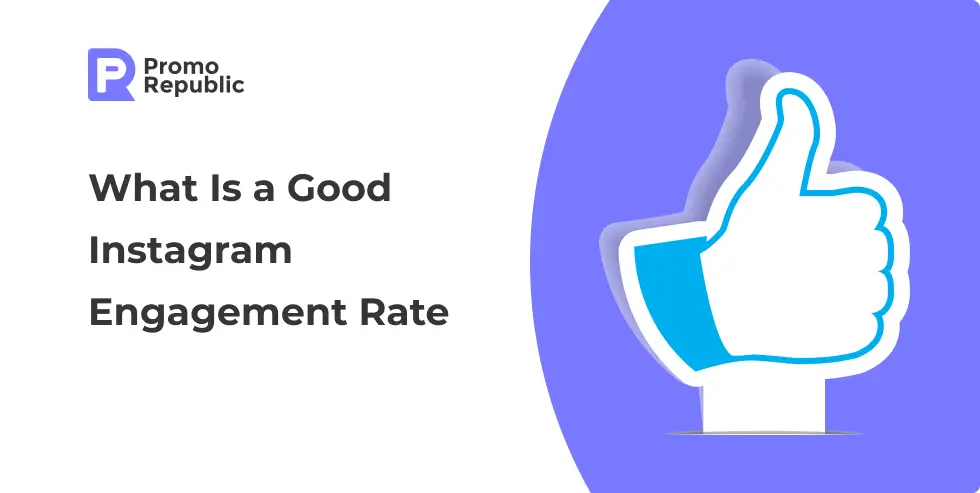Marketing ROI: Definition and How to Calculate It in Your Agency Business

Content writer and blog editor at PromoRepublic
ROI — one of the vital marketing metrics along with LTV, CAC, and NPS. ROI is the rate of return on investment. This indicator shows how profitable or unprofitable a project or product is.
By investment, we mean the contribution directly to the business, i.e., the cost of staff salaries, rent of premises, marketing, purchase of raw materials and supplies, purchase of software and services necessary for work.
“All marketers love and consider it their duty to calculate ROI.” No. There is no unequivocal opinion among professionals about this indicator.
Proponents of ROI calculation are confident that the figure is important to determine the strategy and makes it possible to assess the benefits of all advertising investments. Opponents, however, appeal to the subjectivity of the indicator: a person who counts ROI tries to highlight its usefulness, and because of the flexible form of calculating the index, it can easily be done.
We are among the proponents of ROI. First, understanding ROI allows you to control your marketing and forecast your budget. Second, the entire process of calculating ROI can be automated to save significant time and keep human error to a minimum.
And today, we’re going to tell you how to calculate and improve your marketing ROI.
How to calculate marketing ROI?

One of the main problems many marketers have is that they measure the current or just past advertising campaign without taking into account all the previous campaigns, and they do it, at best, once a month.
The second problem that follows from the first is that they do it the way they know. The most common practice is to summarize all the data in Excel and calculate using formulas. This is quite painstaking and monotonous work that requires attention, patience, and, most annoyingly, time, which is never enough.
In order to start calculating ROI or marketing ROI, you need data. It is important to consider all possible indicators to take the most out of your marketing efforts and calculate your ROI as accurately as possible. The longer the period, the more accurate the conclusion will be.
What is a good marketing ROI?

Good ROI is anything above 0.1%. For many channels (e.g., contextual advertising), 20% is a perfect indicator.
Excellent ROI is anything above 200%.
But ROI is ratiometric that is not indicative in isolation from context. Because you can get a big ROI with a small enterprise profit. You can’t say you’re making the most profit without knowing the real income and expense based on ROI alone.
If you’re selling as much product as possible and making a maximum profit (we’re not taking into account price increases), then it’s time to maximize channel optimization and increase ROI. If not, you first need to reach that maximum point, which means investing in expanding your market. Accordingly, spend more money on advertising and lower your ROI a little bit.
Let’s look at an example.
| Items sold | Income | Expenses | Profits | ROI | |
| Campaign #1 | 9 | 7200 | 3500 | 3700 | 105% |
| Campaign #2 | 22 | 17600 | 11250 | 6450 | 56% |
We have two campaigns. The goods, for example, are cups. In the first case, the ROI is much higher — 105%. It would seem that this campaign is more successful. But during the second campaign, more units of goods were sold, and profit is almost twice as much.
Suppose you also produce flower pots. The maximum number of flower pots you can produce at a particular capacity in a month is 50. But at the same time, you can not sell as much, and the product will lie in stock. You can invest more and more in advertising until you sell those 50 pots, as long as the ROI is > 100% and the campaigns are not unprofitable. Once you’ve reached that maximum, you can optimize your ad spend and increase your ROI.
How to improve marketing ROI?

Now you are familiar with the concept of marketing ROI and know how to assess whether it is good or not. But you also need to understand how to improve it.
Set clear goals
If your goals are unclear, there are chances that you’re not using the right metrics to track ROI.
The first step in improving your marketing ROI is to set clear goals that allow you to achieve objective and measurable results.
Such as “increase awareness” or “increase conversions” are vague and simply don’t suit you. Make sure you are setting SMART goals, i.e., specific, measurable, achievable, relevant, and time-bound.
Determine Costs
It’s always better to determine marketing costs in advance of the campaign launch. These can include expenses on creativity, design, staff, etc. This will help you develop a clear strategy for measuring marketing ROI. You’ll also be able to decide which metrics to include in the marketing ROI calculation.
Use specialized marketing platforms
Armed with a handy marketing automation tool, you can get all the data you need to properly assess your marketing ROI and launch new marketing campaigns much easier and faster. For example, we recommend using PromoRepublic. With this top-notch tool, you not only get detailed analytics and reports, but you can also automate your posting, create new publications faster, and much more.
I calculated the marketing ROI. What’s next?
If we are talking about paid advertising — adjust advertising campaigns, switch off the ineffective ones, reduce or increase the advertising budget in order to expand the market without any inefficient spending.
If we are talking about other costs, analyze what else is worth spending at the expense of which you can increase the effectiveness or vice versa.
Experiment. Test new ideas. Launch new campaigns. Take corrective action as soon as you see you’re going in the wrong direction.
The main value of ROI is that calculating this formula on time allows you to make cheap mistakes. So make mistakes so you can learn and find the right path.





